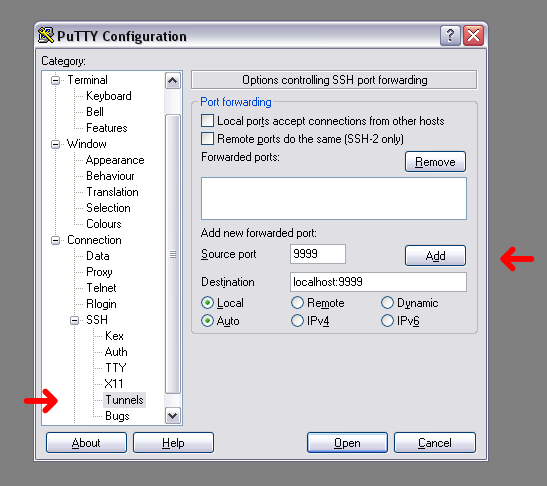



Enter the following commands into the terminal:.Note: ADDTEXT is a delimiter that's used to determine when to stop accepting input for the configuration file. Edit the SSH configuration file with the following command:.ssh directory with the following command: By default, this opens to your home directory (/home/mobaxterm).
#Ssh proxy config install
See Install the Advanced Server Access client.
#Ssh proxy config password
If you use Password Authentication on both and you will be requested to fill password two times. Therefore, when connects directly to via SSH, ssh will first make an SSH connection to and then use this, to connect to (establish TCP forwarding behind the scenes etc.). In particular and assuming the above inventory, one could add the following to their. ssh/config file instead of adding this to Ansible inventory. The same effect can be achieved by incorporating Prox圜ommand or ProxyJump in your. This method is most helpful if you know your playbook will always be run from a server or workstation where the SSH config is present. The alternative, which would apply the proxy configuration to all SSH connections on a given workstation, is to add the following configuration inside your ~/.ssh/config file: Host bastionĪnsible will automatically use whatever SSH options are defined in the user or global SSH config, so it should pick these settings up even if you don't modify your inventory. The -W argument tells SSH it can forward stdin and stdout through the host and port, effectively allowing Ansible to manage the node behind the bastion/jump server. This sets up an SSH proxy through on port 2222 (if using the default port, 22, you can drop the port argument). If I am connected to the private network directly, I can just run ansible commands and playbooks, and Ansible can see all the servers and connect to them (assuming my SSH config is otherwise correct).įrom the outside, though, I need to modify my inventory to look like the following: Īnsible_ssh_common_args='-o Prox圜ommand="ssh -p 2222 -W %h:%p -q "' In my Ansible project, I had an inventory file like the following: This is helpful for a project that might be run from various workstations or servers without the same SSH configuration (the configuration is stored alongside the playbook, in the inventory).
#Ssh proxy config how to
The first way to do it with Ansible is to describe how to connect through the proxy server in Ansible's inventory. That network is connected to the Internet through a single reverse proxy / 'bastion' host.īut I still want to be able to manage the servers on the private network behind the bastion from outside. I have a set of servers that are running on a private network. Since I've set this up a number of times, but I just realized I've never documented it on my blog, I thought I'd finally do that.


 0 kommentar(er)
0 kommentar(er)
